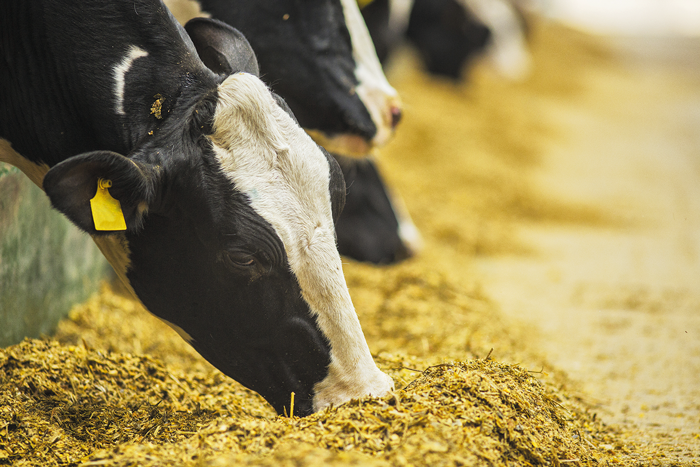Making the most of the dry period
13th March 2020
Getting nutrition and management right in the dry period has been shown to reduce health issues and optimise lactation performance, fertility and overall cow productivity. Sarah Kidby spoke to Trouw Nutrition about overcoming key challenges.
Getting nutrition and management right in the dry period has been shown to reduce health issues and optimise lactation performance, fertility and overall cow productivity. Sarah Kidby spoke to Trouw Nutrition about overcoming key challenges.
An important resting period for dairy cows, the dry period allows udder tissues to repair ahead of lactation and provides an opportunity to dispel potential pathogens that could cause mastitis. Key aims for farmers during this time are maintaining body condition so that cows calve in the best condition, and maximising dry matter intake (DMI) post-calving to ensure high performance and reduce the risk of health and fertility problems. For this, a smooth, low-stress transition from the dry period
to lactation is particularly important.
Trouw’s ruminant technical development manager Liz Homer (pictured) emphasises the importance of the whole lactation cycle, not just the dry period, in order to achieve a good transition from the dry period to milking. She defines the transition period as six weeks pre-calving to six weeks post-calving, but monitoring cow body condition during late lactation is important – if cows are too fat when they dry off, they will mobilise more body fat and reduce their feed intake post-partum. It is during late lactation that farmers can make the biggest difference to cow condition as changes can still be made at this point, but not during the dry period. In early lactation, it will be important to encourage cows to eat by pushing the feed up regularly and making sure they have plenty of space.
Controlling energy intake in the dry period has been shown to offer benefits for peripartum health, DMI and productivity. Liz explains: “Many people talk about controlled energy diets during the dry period, widely established in the literature as the best way to prepare cows for the subsequent lactation, especially controlled energy in the close-up period, but it can be difficult to achieve. Few farmers estimate the DMI of dry cows and therefore don’t know the true energy intake to determine whether or not they are feeding a controlled energy diet.” To estimate DMI, a good start would be to estimate feed out and refusals divided by cows in the group, she adds. Producers can also try to control intake through the neutral detergent fibre (NDF) in the diet promoting fill. Typically, a partial DCAB or DCAB diet is fed in the dry period, but you need to know what cows are eating in order to establish the desired DCAB per farm to achieve.
After particularly heavy flooding at the end of last year, analysis of feed and silage will be particularly important, according to Liz: “Feed analysis and silage analysis is always important to know what you are feeding, but flooded land may have resulted in leaching of some important minerals, so forage should be tested when new season silage is harvested, especially if you are using a DCAB ration as you need to be as precise as possible.”
After calving
Post-partum nutrition is just as important and Liz recommends a post-calving drink containing calcium. “Most farmers use calcium boluses but some recent research coming out is showing that calcium carbonate supplementation through the Trouw Reviva drink keeps calcium levels higher for longer compared to a bolus,” she explains. “But it’s not just the calcium in the drink, it’s the rehydration and the balance of salts.” This will encourage cows to eat, as well as reducing the risk of milk fever. Glucogenic diets help to promote a faster return to energy balance and good fertility, she adds.
Sub-clinical disease
Most farmers will only get a few cases of clinical milk fever, but the main issues are generally sub-clinical, affecting performance but otherwise going undetected, Liz says. With this in mind, how can dairy producers overcome sub-clinical cases and maximise productivity after calving? She says the key is: “Monitor condition throughout lactation, make sure they dry off in the correct condition, feed a proper transition diet and control the energy, including a decent amount of quality protein in the diet.”
After calving, it is essential to manage this stressful period correctly by minimising the amount of changes cows go through and giving them sufficient space to eat, optimising DMI.

